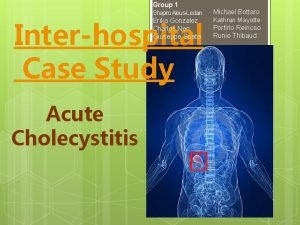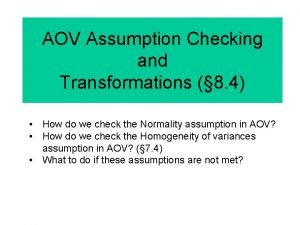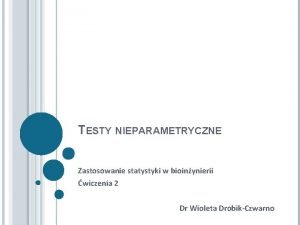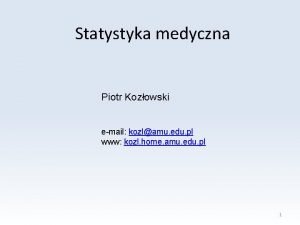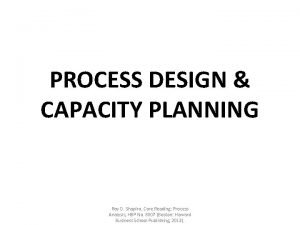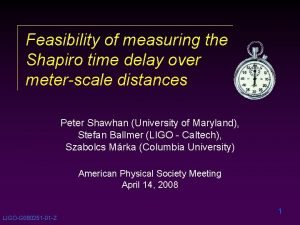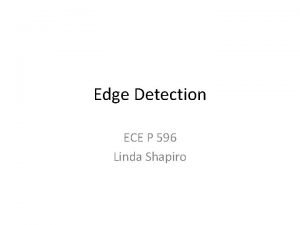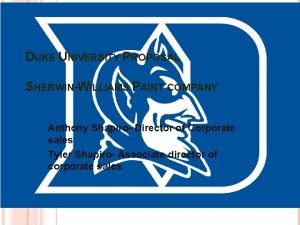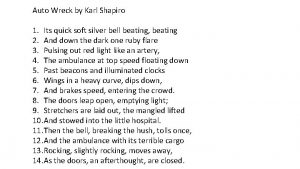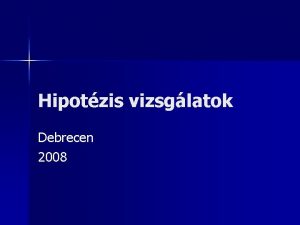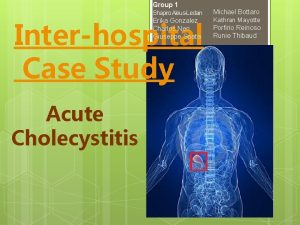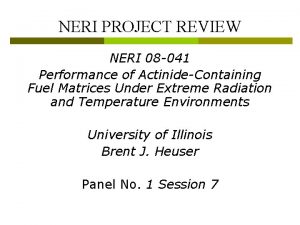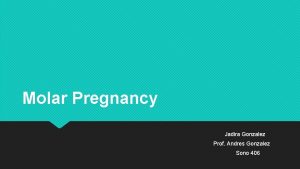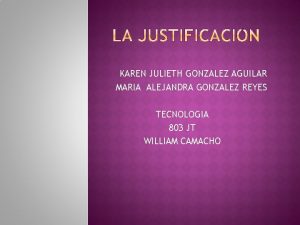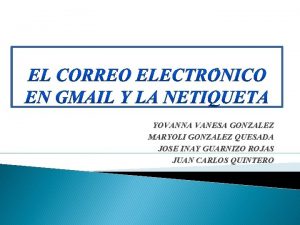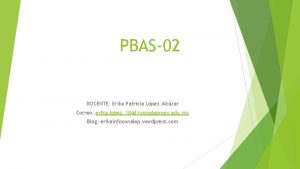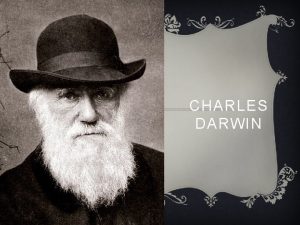Group 1 Shapiro AleusLedain Erika Gonzalez Charles Neri



















- Slides: 19

Group 1 Shapiro Aleus-Ledain Erika Gonzalez Charles Neri Giuseppe Spata Inter-hospital Case Study Acute Cholecystitis Michael Bottaro Kathran Mayotte Porfirio Reinoso Runie Thibaud

Patient History September 19, 2013, a CT scan of the abdomen/pelvis and a sonogram of the abdomen were taken of a 82 year old male ambulatory patient (who will be referred to as patient X). According to Igor Fishkin MD results showed that the gallbladder appeared to be distended with thickening of the wall, indicating a possible case of acute cholecystitis.

What is Acute Cholecystitis? Sudden inflammation of the gallbladder Once inflamed bile is unable to travel out of gallbladder, causing an accumulation of bile and increased pressure. The combination of concentrated bile and pressure building up can irritate the wall of the gallbladder causing it to swell. Severe inflammation of the gallbladder will interrupt normal blood flow, and if not treated can cause cell death.

Normal Gall Bladder Inflammed Gall Bladder

Acute Cholecytitsis Causes Over 90% of acute cholecytitis cases are caused by obstruction of the cystic duct by gallstones in the gall bladder Numerous other pathologies may also be causes such as an infection, trauma and tumors of the gallbladder.

Signs and Symptoms Pain in the right upper quadrant An increase in pain when taking in a deep breath Fever

Diagnosing Acute Cholecytitsis Routine physical exam, to see if there's any tenderness in the right upper quadrant Blood test The size and shape of the gallbladder is best demonstrated using CT or ultrasound, which will also show any abnormal fluid levels

CT Exam of Patient X Patient was placed in supine position on the CT table Consciously sedated with 50 mcg of fentanyl, a lightly sedating narcotic, intravenously by the interventional radiology nurse. The patient was also administered 1 mg of Versed which is a drug derivative of midazolam which induces a drowsy and calm feeling throughout the exam. Vital signs were closely monitored throughout the procedure and the CT of the abdomen was obtained.

CT Scans Normal size gallbladder Patient X, Gallbladder diagnosed with Cholecystitis

Following the CT exam of Patient X it was decided by the attending physicians that it was time for a CT guided percutaneous cholecystostomy

CT Guided Percutaneous Cholecystostomy A procedure done utilizing an imaging modality for guided placement of a drainage catheter into the gallbladder lumen to retrieve a sample of fluid for testing, in this case CT was used, though ultrasound or fluoroscopy could have also been utilized.

CT Guided Percutaneous Cholecystostomy of Patient X According to the report of Doctor Fishkin A safe spot for needle insertion was chosen and marked on the skin. The right upper quadrant of the abdomen was prepped and draped in the usual sterile fashion. Micropuncture Kit Micro puncture set in a French Size 5 and an All purpose draining catheter in a Size 8 were used Drainage Catheter

The gallbladder was punctured with an 18 gauge needle under CT guidance. Aspiration of bile/pus from the drain confirms satisfactory position Approximately 300 cc's of a cloudy greenish fluid were aspirated out of patient X’s catheter and sent for examination

Post-Percutaneous Cholecystostomy Patient requires bed rest , typically 2 -4 hours with regular monitoring of vital signs, and medication for pain if necessary Catheter must be cared for by being flushed and aspirated regularly with saline approximately every 6 to 8 hours. Once patient is determined to be stable a cholecystogram can be performed to confirm satisfactory catheter position and state of the gallbladder.

Cholecystogram A fluroscopic procedure , where contrast is injected into the catheter and radiograph's are taken Cholecystogram images of patient X

If lab results from the Percutaneous Cholecystostomy diagnose the patient with Cholecystitis, the patient will need to undergo a Cholecystectomy.

Cholecystectomy A cholecystectomy is the surgical removal of the gallbladder Laparoscopic cholecystectomy uses a small camera to assist in the procedure, resulting in less pain and a typical recovery time of 1 -2 weeks.

Laparoscopic Cholecystectomy The camera is inserted through one of four incisions in the abdomen. The doctor will use air or carbon dioxide to inflate the patient’s stomach in order to have a clear view of the surgical instruments and the gallbladder and have a clean removal through one of the incisions.

Post-Laparoscopic Cholecystectomy Liver will produce bile and transport it to the small intestine via the common bile duct rather then it being stored in the gallbladder, patient is able to resume a normal life. Normal functioning gallbladder with bile traveling from liver to gallbladder to small intestine Gallbladder has been removed, bile now travels from liver to small intestine via the common bile duct
 Charles neri
Charles neri David shapiro natick
David shapiro natick Sheree shapiro
Sheree shapiro Shapiro
Shapiro Woodlane medical centre doctors
Woodlane medical centre doctors Irena horek
Irena horek Test shapiro wilka
Test shapiro wilka Roy d. shapiro
Roy d. shapiro Ben shapiro bicep
Ben shapiro bicep Shapiro time delay
Shapiro time delay Edge shapiro
Edge shapiro The quantum illumination story
The quantum illumination story Umcg intranet
Umcg intranet Anthony shapiro
Anthony shapiro Auto wreck poem
Auto wreck poem Transverse conductivity
Transverse conductivity Review of modern physics
Review of modern physics Dan shapiro usc
Dan shapiro usc Shapiro wilk teszt
Shapiro wilk teszt Multinational financial management shapiro
Multinational financial management shapiro
